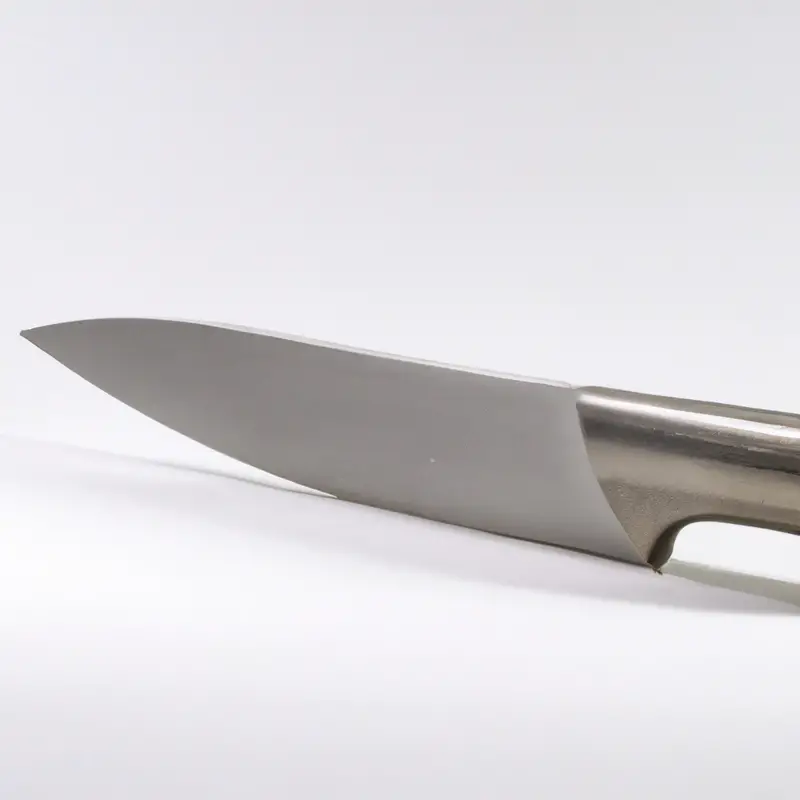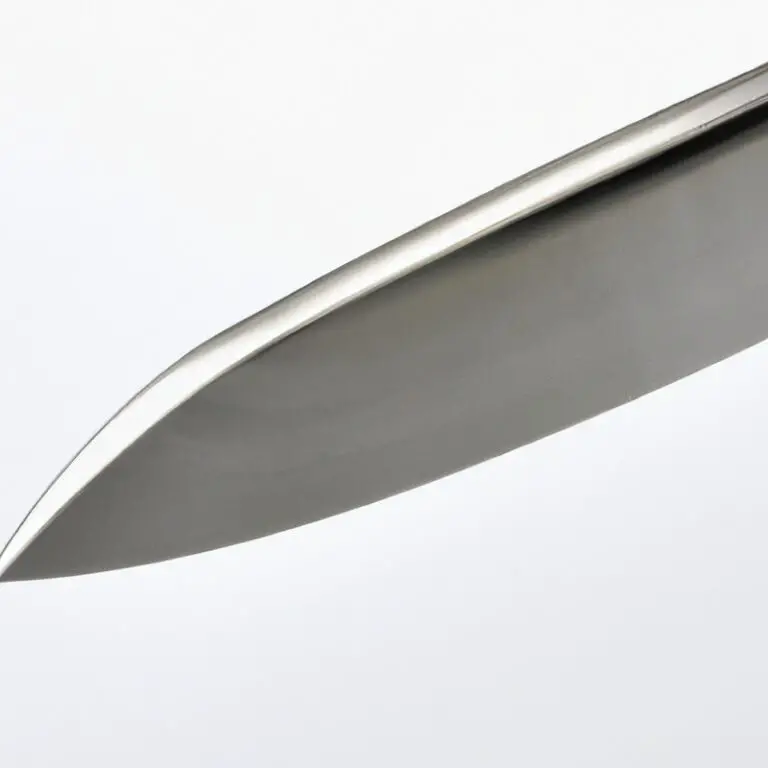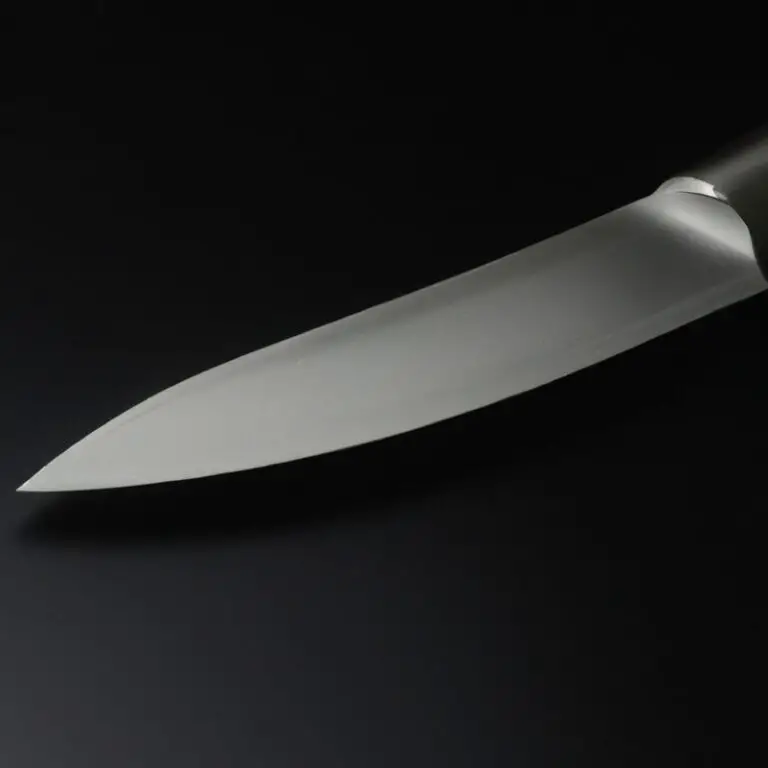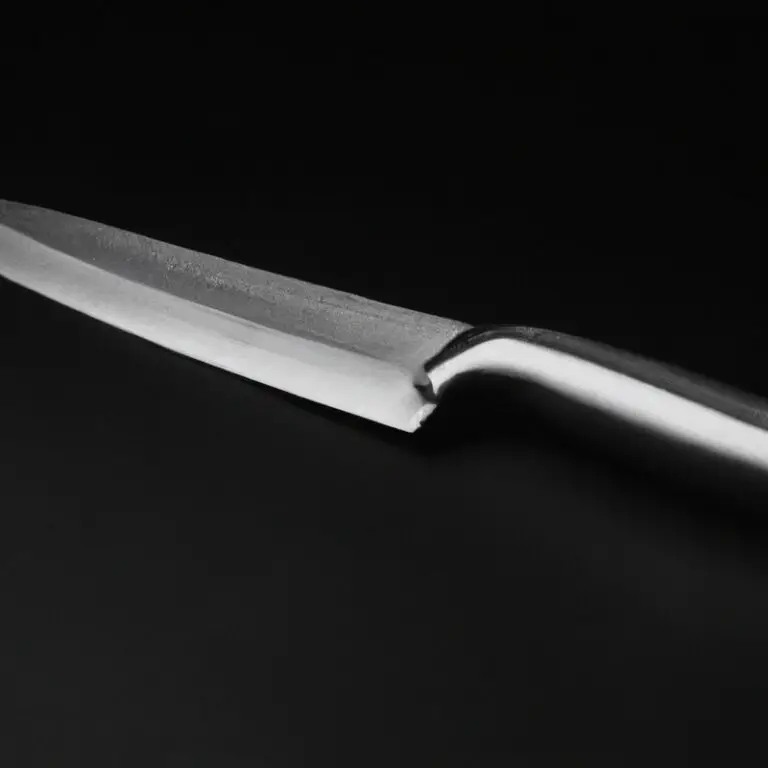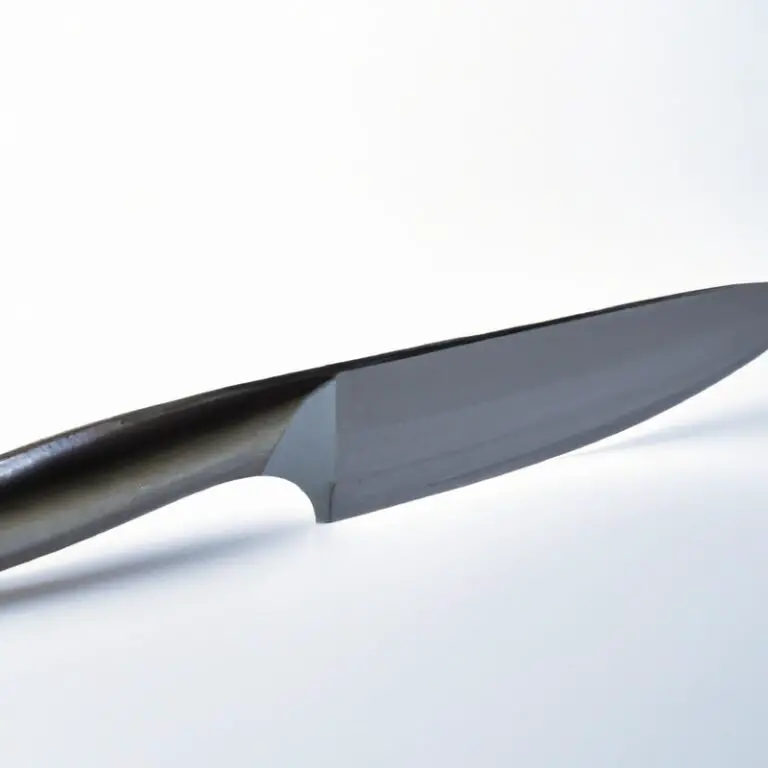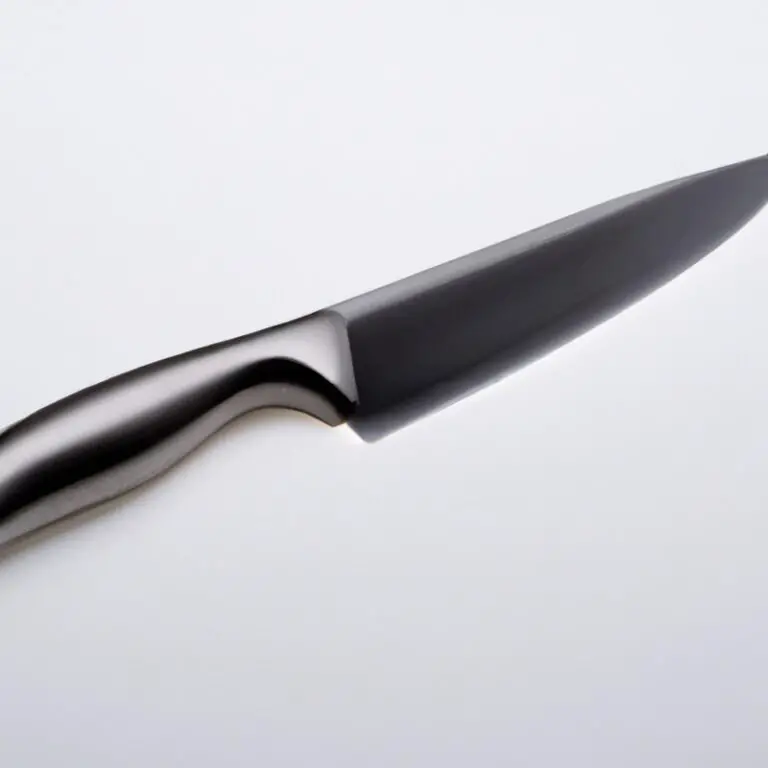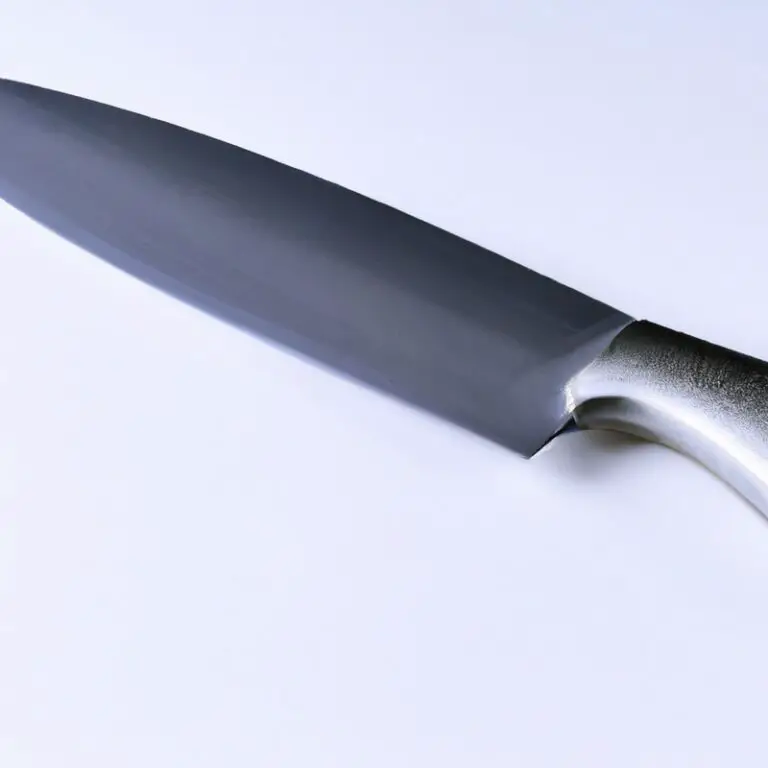How To Slice Peaches With a Santoku Knife? Easy!
Key Takeaways:
- A Santoku knife is a versatile tool that can be used to slice peaches with ease.
- Proper technique is crucial to achieving consistent and precise slices when using a Santoku knife.
- Safety should be a top priority when using any sharp kitchen tool.
- With a little practice and attention to detail, you can become proficient at slicing peaches with a Santoku knife.
Are you tired of struggling to slice your peaches with an ordinary knife? Upgrade your kitchen game by mastering the art of slicing peaches with a Santoku knife.
This Japanese blade is known for its precision, balance, and sharpness, making it the perfect tool for slicing delicate fruits like peaches.
In this article, I will guide you through the basics of using a Santoku knife, choosing the right peach, preparing it for slicing, and adjusting your technique for different sizes and ripeness. Plus, I’ll share safety measures and tips to keep your knife in top shape.
So, let’s get started!
| Santoku Knife | Regular Knife | |
| Blade Length | 5-7 inches | 8-10 inches |
| Blade Shape | Flat edge with a sheepsfoot tip | Pointed tip with a curved edge |
| Handle | Balanced weight and grip | Varies depending on brand and style |
| Technique | Slice with a rocking motion using the flat blade | Slice with a sawing motion using the pointed tip |
Understanding the Santoku knife: The basics you need to know
The Santoku knife is a Japanese chef’s knife that has become popular in many kitchens around the world. It typically has a shorter, wider blade than a traditional chef’s knife, which makes it ideal for slicing, dicing, and chopping.
The word “Santoku” translates to “three virtues,” referring to its ability to handle three types of cuts: slicing, dicing, and mincing.
Some of the basic features of a Santoku knife include a flat edge and a rounded tip, which provides versatility for a range of cutting techniques. When choosing a Santoku knife, look for a blade that feels balanced in your hand and has a comfortable handle.
Understanding the basics of the Santoku knife will help you get the most out of this versatile kitchen tool and make your peach slicing experience smoother.
The importance of choosing the right peach for slicing
Choosing the right peach for slicing is crucial as it greatly affects the texture and flavor of the fruit. When selecting peaches for slicing, choose those that are ripe but with a firm flesh.
Avoid overripe or underripe fruits as they are difficult to slice and may affect the taste.
The skin should be smooth and without blemishes or bruises. Look for peaches that are fragrant, which is an indication of their sweetness.
Additionally, consider the size of the peaches and choose those that are manageable for slicing with your Santoku knife.
By choosing the right peaches, you’ll achieve perfectly sliced fruits that are juicy, sweet, and easy to handle.
Preparing your peach for slicing with a Santoku knife
Before slicing your peach with a Santoku knife, ensure that it is properly ripened. A ripe peach should have a slight give when gently pressed, a sweet smell, and a bright color.
Wash the peach then dry it with a clean towel before cutting.
Cut the peach in half and remove the pit using a small knife or spoon. Place the cut-side down on a cutting board and slice evenly into desired size slices with a Santoku knife.
Always exercise caution to avoid injury and use a firm grip on the handle of the knife.
After slicing, discard any remaining peach that is not completely ripe or has bruises.
The right grip and technique for slicing peaches with a Santoku knife
To slice peaches with a Santoku knife, start by holding the handle firmly in your dominant hand. Place the peach on a cutting board with the stem side up.
Use your other hand to hold the peach steady and make a small incision around the top of the peach, just deep enough to pierce the skin.
Next, rotate the peach and make another incision, creating a circular cut around the peach. Gently twist the peach to separate the halves, then remove the pit.
To slice the peach, place the flat side down on the cutting board and make vertical cuts with the knife, starting at the top and moving toward the bottom.
Keep the blade steady and use a gentle sawing motion to cut through the flesh of the peach. Continue to slice until you reach the bottom of the peach.
It’s important to grip the knife firmly and use a sawing motion to avoid crushing or bruising the fruit.
Remember to keep your fingers tucked under and away from the blade while slicing. With a little practice, you’ll quickly master the art of slicing peaches with a Santoku knife.
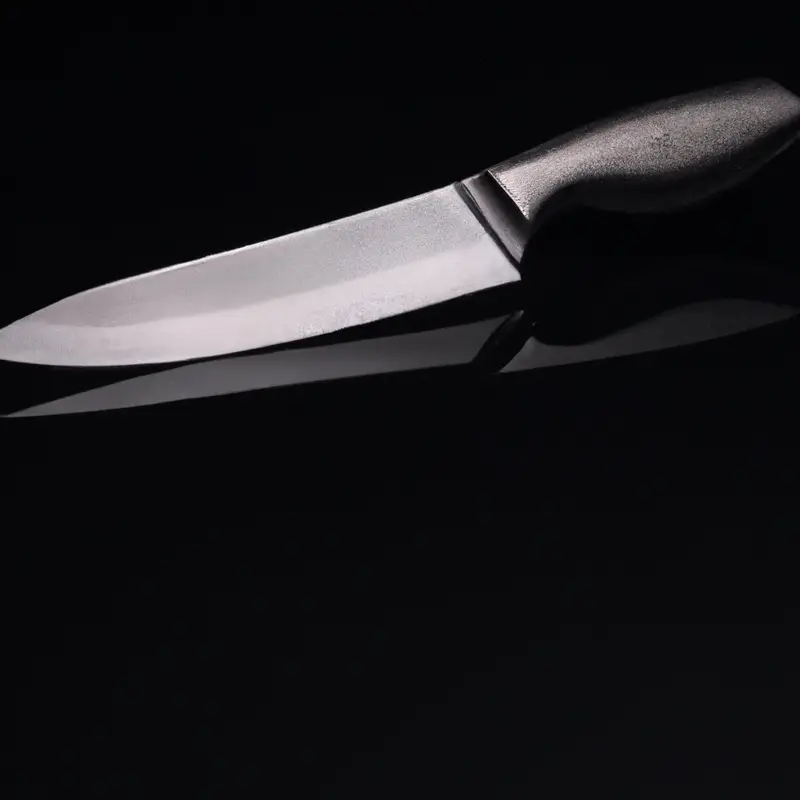
How to adjust your Santoku knife for different peach sizes and ripeness
To adjust your Santoku knife for different peach sizes and ripeness, you must first understand that the blade’s angle affects the slicing technique. A sharpened blade is crucial for optimal slicing performance.
For firmer peaches, a straight downward motion with a 15-20 degree angle is ideal, while a slightly shallower angle is better for softer or ripe peaches.
Use the knuckle of the hand holding the peach to guide the blade’s angle and ensure even slices. Adjusting your knife’s angle based on the fruit’s texture ensures precision and efficient slicing.
Safety measures when using a Santoku knife for slicing peaches
Safety should always be a top priority when using a sharp Santoku knife to slice peaches. Here are some safety tips to keep in mind:
- Use a sturdy cutting board to keep the peach stable and prevent any injuries caused by the knife’s slip.
- Keep your fingers and thumbs away from the blade while slicing the peach. Use a claw grip technique to hold the peach securely and to minimize the risk of injury.
- Use a knife with a blade length suitable for the size of the peach. A larger knife should be reserved for larger fruits.
- Cut the peach slowly and carefully, avoiding any sudden or aggressive movements that could lead to injuries.
- Always use a properly sharpened blade. A dull knife can slip and cause unintended cuts.
- After use, clean your Santoku knife carefully and put it away in a safe place.
Following these safety measures can help you enjoy your peach slicing experience with your Santoku knife safely.
Tips for keeping your Santoku knife sharp for seamless slicing
To keep your Santoku knife sharp for seamless slicing, here are some tips you should follow:
- Sharpen your knife regularly: A dull knife is more dangerous than a sharp one. Sharpen your knife every few weeks, or when you notice the blade is losing its edge.
- Use a honing rod: A honing rod helps realign the edge of the blade and keeps the knife sharp. Use it before and after each use of the knife.
- Store your knife properly: A knife block or magnetic strip is the best way to store your Santoku knife, as it keeps the blade protected and prevents damage.
- Don’t use glass cutting boards: Glass cutting boards can dull and damage your knife quickly. Instead, use wooden or plastic cutting boards.
- Handwash your knife: Never put your Santoku knife in the dishwasher. Handwash it with warm, soapy water and immediately dry it to prevent rust or damage.
By following these tips, you can ensure that your Santoku knife remains sharp and ready for seamless slicing.
Exploring alternative slicing techniques for peaches using a Santoku knife
When it comes to slicing peaches with a Santoku knife, there are various techniques that you can try to achieve different textures and appearances. Here are some alternative slicing techniques you can explore:
- Wavy slices: With a slight sawing motion, make wavy cuts along the peach to create a unique and decorative look.
- Thin slices: For a delicate texture and appearance, slice the peach thinly using a back-and-forth motion.
- Half-moon slices: Cut the peach in half, then make half-moon slices by cutting along the curve of each half.
- Dice: Make cuts in a grid pattern on the peeled peach and dice it into small, even cubes.
By trying these alternative slicing techniques, you can add some creativity and variety to your peach dishes and presentation. Just remember to adjust your technique based on the ripeness and size of the peach to ensure the best results.
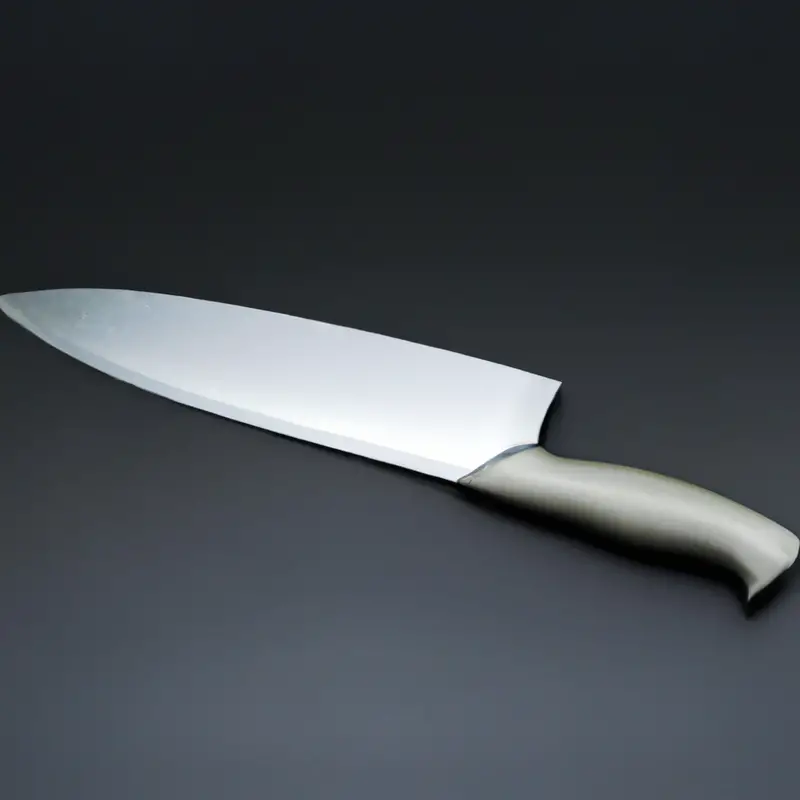
Creative serving suggestions for sliced peaches
Once you have mastered the art of slicing peaches with a Santoku knife, it’s time to get creative with serving suggestions. Here are some ideas to inspire you:
- Grilled peaches: Brush peach slices with olive oil and grill until tender. Serve with a dollop of vanilla ice cream and drizzle with honey.
- Peach and arugula salad: Toss sliced peaches with arugula, crumbled feta cheese, and a lemon vinaigrette for a refreshing summer salad.
- Peach salsa: Combine diced peaches with chopped red onion, jalapeño pepper, cilantro, and lime juice for a sweet and spicy salsa.
- Peach and prosciutto crostini: Top crisp slices of baguette with peach slices, prosciutto, and a sprinkle of goat cheese for an elegant appetizer.
- Peach smoothie: Blend sliced peaches with yogurt, almond milk, and a touch of honey for a delicious and healthy breakfast or snack.
These are just a few ideas to get you started. Experiment with your favorite flavors and ingredients to create your own unique peach dishes.
Final Verdict
The Santoku knife is a versatile and reliable tool for slicing peaches. From selecting ripe and juicy peaches to adjusting your grip and technique, this guide has provided you with all the basics you need to know.
By implementing these tips, you can ensure your safety, maintain the sharpness of your Santoku knife, and achieve flawless slices every time.
With its precision and control, the Santoku knife is the perfect tool for elevating your peach slicing game. So go ahead, put these techniques to the test, and wow your guests with beautifully sliced peaches.
Trust us, your taste buds (and your guests) will thank you!

